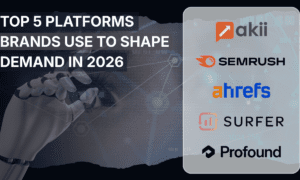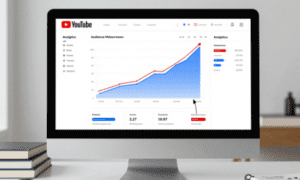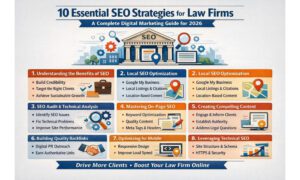In today’s competitive landscape, businesses are constantly seeking innovative ways to communicate their message effectively. Among the various tools available, 2D animation has emerged as a powerful medium that combines visual appeal with clear messaging. For companies across the UK and Ireland, animation offers a unique opportunity to explain complex concepts, engage customers, and drive conversions in ways traditional content simply cannot match.
Professional animation services have become increasingly accessible to businesses of all sizes. No longer limited to large corporations with substantial marketing budgets, quality 2D animation is now a viable option for small and medium enterprises looking to enhance their communication strategy. With the right approach to animation copyright, companies can create compelling content that respects intellectual property while maximising impact.
Understanding the future of animation is crucial for businesses planning their communication strategy. As we move through 2025, several key trends are shaping how companies use animated content to connect with their audiences. From interactive elements to data-driven storytelling, these developments are transforming what’s possible in the commercial animation space.
For many organisations, especially those dealing with complex products or services, animated data visualisation has become an essential tool. Converting complicated statistics and processes into clear, engaging visual narratives helps businesses communicate effectively with both internal and external stakeholders, making information more accessible and memorable.
One of the most significant benefits of animation is its versatility across different business functions. From training and education to marketing and sales, animation trends continue to evolve to meet specific business needs. Companies that stay ahead of these developments gain a competitive advantage in how they connect with their audience.
Why Animation Works for Business Communication
Animation succeeds where other communication methods often fall short because it combines visual and auditory elements in a controlled, focused way. This multi-sensory approach helps viewers retain information more effectively. Research shows that people remember approximately 10% of what they hear, 20% of what they read, but nearly 80% of what they see and do. Animation taps into this visual learning preference that most people share.
For businesses explaining technical products or complex services, animation removes the constraints of physical demonstration. A software company can show the inner workings of their system, a financial services firm can illustrate abstract concepts like compound interest, and a healthcare provider can demonstrate medical procedures—all without the limitations of real-world filming.
Animation also excels at emotional connection. Through character design, colour theory, and storytelling techniques, animated content can evoke specific emotional responses that support business objectives. This emotional engagement is particularly valuable when introducing new products, changing brand perception, or building customer loyalty.
https://www.youtube.com/watch?v=tiUYMcPAI84
Types of Animation for Different Business Goals
Not all animation serves the same purpose, and businesses should select the style that best fits their specific objectives:
Explainer animations work well for introducing products or services, breaking down complex offerings into understandable components. These typically follow a problem-solution narrative structure and work especially well for website landing pages and social media.
Training animations focus on knowledge transfer and skill development. These are particularly effective for internal use, helping staff learn new procedures, software, or company policies in an engaging format that improves retention.
Data visualisation animations transform numbers and statistics into visual stories, making trends and insights immediately apparent. These are invaluable for reports, presentations, and helping leadership teams make data-driven decisions.
Brand story animations focus on communicating company values, history, and mission. These help build emotional connections with customers and are often used in about-us sections, investor relations, and recruitment materials.
The Animation Production Process: What Businesses Should Know
Understanding the animation production process helps businesses collaborate more effectively with animation studios and achieve better results. While companies don’t need to master the technical aspects, knowing the basic workflow ensures smoother project management.
The process typically begins with a discovery phase, where the animation studio works to understand the business objectives, target audience, and key messages. This stage is crucial for setting the right direction and avoiding costly revisions later.
Next comes the scripting and storyboarding phase. The script focuses on clear, concise messaging, while storyboards map out the visual journey. Business stakeholders should pay particular attention to this stage, as changes become increasingly expensive as the project progresses.
The visual style development establishes the look and feel of the animation. This includes character design (if applicable), colour schemes, and overall aesthetic approach. The chosen style should align with existing brand guidelines while remaining appropriate for the content and audience.
Animation production itself involves creating the actual animated sequences based on approved storyboards. This is followed by adding voice-over, sound effects, and music to enhance the viewing experience and reinforce key messages.
Throughout this process, regular review points allow businesses to provide feedback and ensure the project remains aligned with objectives. The most successful animations result from collaborative partnerships between businesses and animation studios.
Measuring the Impact of Animation on Business Goals
Like any business investment, animation should deliver measurable returns. Setting clear objectives before production helps track effectiveness and justify the investment. Common metrics include:
- Increased time spent on webpages featuring animation
- Higher conversion rates compared to non-animated content
- Improved knowledge retention in training scenarios
- Greater social media engagement and sharing
- Enhanced brand recall in customer surveys
Many businesses find that animation delivers both tangible and intangible benefits. While metrics provide concrete evidence of success, the qualitative improvements in communication clarity and brand perception often prove equally valuable.
Budget Considerations for Business Animation
Animation costs vary widely based on complexity, length, style, and production quality. For businesses new to animation, understanding the factors that influence pricing helps set realistic expectations and allocate appropriate budgets.
Length is perhaps the most obvious factor—longer animations require more work and therefore cost more. However, style complexity plays an equally important role. Simple motion graphics typically cost less than character-based animation with detailed movements.
The level of customisation also impacts pricing. Standard templates or characters require less work than fully bespoke designs created specifically for your brand. For many businesses, a hybrid approach offers the best value, combining some custom elements with more standardised components.
Voice-over quality represents another consideration. Professional narration adds credibility but increases costs. For some internal or technical animations, using in-house talent might suffice, while customer-facing content usually benefits from professional voice actors.
Rather than viewing animation as a one-time expense, forward-thinking businesses consider the long-term value. Well-designed animation can be repurposed across multiple channels and campaigns, extending its usefulness well beyond the initial deployment.
Choosing the Right Animation Partner
Selecting the right animation studio makes all the difference in achieving business objectives through animated content. Beyond reviewing portfolios, businesses should consider several factors when evaluating potential partners:
Industry experience matters because different sectors have unique communication challenges. An animation studio with experience in your industry will understand the terminology, audience expectations, and regulatory considerations specific to your field.
Communication style and process alignment are equally important. The studio’s approach to project management, feedback implementation, and milestone approvals should match your company’s working style for a smooth collaboration.
Technical capabilities should match your distribution channels. If your animations will primarily appear on social media, ensure the studio excels at creating content optimised for these platforms, including aspect ratios, file sizes, and design approaches that work well on mobile devices.
Strategic thinking separates great animation partners from merely good ones. The best studios don’t simply execute your vision—they enhance it with insights about effective visual communication and audience engagement based on their experience.
Long-term partnership potential offers significant advantages. A studio that understands your brand, audience, and objectives can work more efficiently on subsequent projects, maintaining consistency while continuing to innovate.
The Future of Business Animation
As we look ahead, several developments are shaping how businesses will use animation in their communication strategies:
Interactive animation is gaining prominence, allowing viewers to control their experience and explore content at their own pace. This approach increases engagement and provides valuable data about viewer interests.
Personalised animation, leveraging customer data to create tailored experiences, is becoming more accessible. From addressing viewers by name to showing product configurations based on their preferences, these customised approaches significantly boost relevance.
New distribution channels continue to emerge. While websites and social media remain important, animations optimised for augmented reality, virtual events, and interactive presentations are opening new possibilities for business communication.
Taking the First Step with Animation
For businesses new to animation, starting small often makes sense. A short explainer video or simple product demonstration provides valuable experience in the production process without requiring a substantial initial investment.
Begin by clearly defining your objectives—what specific business goal will this animation address? Whether it’s explaining a new service, simplifying a complex concept, or enhancing your brand story, clarity about your purpose guides all subsequent decisions.
Consider your audience’s preferences and viewing habits. Where will they encounter this animation? What devices will they use? What level of technical understanding do they already have? These insights help shape both content and style.
“We’ve found that the most successful business animations start with a clear understanding of the message and audience,” says Michelle Connolly, Founder and Director of EducationalVoice.co.uk. “Companies that take time to define these elements before focusing on visual style consistently achieve better results. Animation isn’t just about creating something that looks impressive—it’s about crafting visual communication that drives genuine business outcomes.”
For businesses ready to harness the power of animation in their communication strategy, EducationalVoice.co.uk offers professional 2D animation services designed specifically for business needs. Whether you’re looking to explain complex concepts, train your team, or engage customers, their expertise helps transform your message into compelling visual content that delivers measurable results.



































